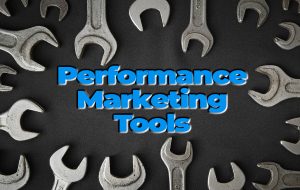Meta Ad Campaigns: Understanding the Difference between Conversion Lift and A/B Tests

Meta ad campaigns play an integral role in the success of digital marketing strategies. When it comes to optimizing the effectiveness of your campaigns, two popular methods stand out: Conversion Lift and general A/B Tests. Understanding the nuances and differences between these approaches can significantly impact your advertising outcomes.
Conversion Lift offers a targeted approach to measuring the true impact of your ad campaigns on driving conversions. By isolating the causal effect of your ads, you gain valuable insights into what truly motivates consumer behavior and how to tailor your strategies for maximum ROI.
On the other hand, general A/B Tests provide a broader view of campaign performance by testing variations across a wider audience sample. This method allows for more exploratory insights into overall ad performance and can help in refining your marketing tactics on a larger scale.
Understanding Meta Ad Campaign Performance Evaluation
Understanding how well your meta ad campaigns are performing is a pivotal aspect of optimizing your advertising strategy. This evaluation process allows marketers to delve into the effectiveness of their ads and make data-driven decisions to enhance campaign outcomes significantly.
Definition and Purpose
Meta ad campaign performance evaluation refers to the analysis and assessment of how well your ads are resonating with the target audience and achieving your advertising objectives. The primary purpose of this evaluation is to uncover insights into the effectiveness of your campaigns, identify areas for improvement, and maximize the return on investment (ROI) of your advertising efforts.
Key Metrics to Evaluate Meta Ad campaigns
- Click-Through Rate (CTR): CTR measures the percentage of users who clicked on your ad after seeing it. A high CTR indicates that your ad is compelling and relevant to your target audience.
- Conversion Rate: The conversion rate tracks the percentage of users who not only clicked on your ad but also completed a desired action, such as making a purchase or signing up for a newsletter. This metric highlights the effectiveness of your ad in driving valuable actions.
- Return on Ad Spend (ROAS): ROAS measures the revenue generated for every dollar spent on advertising. A higher ROAS signifies that your ad campaigns are delivering a strong return on investment.
- Engagement Metrics: Metrics such as likes, shares, comments, and video views provide insights into how well your ads are engaging users on different platforms. High engagement rates indicate that your ad content is resonating with the audience.
- Cost Per Acquisition (CPA): CPA calculates the cost required to acquire a new customer through your ad campaigns. Lowering the CPA while maintaining the desired conversion rate is key to maximizing campaign efficiency.
By analyzing these key metrics and understanding their implications on your ad performance, you can make informed decisions to optimize your meta ad campaigns for maximum impact and success.
Conversion Lift Studies vs. General A/B Tests
Conversion lift studies and general A/B tests are both valuable tools in the realm of digital marketing, each offering unique insights into the effectiveness of advertising campaigns. Understanding the differences between these two methodologies is crucial for optimizing your marketing strategies and achieving meaningful results.
Explanation of Conversion Lift Studies
Conversion lift tests are a sophisticated method used to measure the impact of advertising campaigns on key metrics such as conversions, sales, or brand awareness. Unlike traditional A/B tests, which rely on randomizing audiences into control and test groups, conversion lift studies leverage advanced statistical models to assess the incremental impact of an ad campaign on the target audience.
These studies allow marketers to accurately determine the causal relationship between their ad campaigns and desired outcomes, providing insights into the true effectiveness of their advertising efforts. By comparing the behavior of exposed and unexposed audiences, conversion lift studies reveal the direct influence of ads on consumer actions, enabling data-driven decision-making and campaign optimization.
Overview of General A/B Tests
General A/B tests, on the other hand, are a fundamental method for comparing two versions of a webpage, email, or ad to determine which performs better in terms of a specific goal, such as click-through rates or conversion rates. In a typical A/B test, the audience is randomly divided into two groups, with each group exposed to a different version of the content.
By analyzing the performance of each variant, marketers can identify which version drives the desired outcome more effectively and make informed decisions based on empirical evidence. A/B tests are widely used for optimizing landing pages, email campaigns, and ad creatives, providing valuable insights into user preferences and behavior.
Differences in Methodologies between Conversion Lift Studies and A/B Tests
The primary distinction between conversion lift studies and general A/B tests lies in their methodologies and objectives. Conversion lift studies focus on measuring the incremental impact of advertising on target audiences by comparing exposed and unexposed groups, providing a more accurate assessment of campaign effectiveness.
On the other hand, A/B tests are designed to compare two different versions of content to determine which variant performs better in achieving a specific goal. While A/B tests are valuable for optimizing creatives and user experiences, conversion lift studies offer a deeper understanding of ad performance and its direct impact on consumer behavior.
By leveraging the strengths of both methodologies, marketers can gain comprehensive insights into the effectiveness of their ad campaigns and refine their strategies to maximize ROI. Whether conducting conversion lift studies for in-depth analysis or A/B tests for optimization, a data-driven approach is essential for driving successful marketing campaigns in today’s competitive landscape.
Benefits and Limitations of Conversion Lift Studies
Utilizing Conversion Lift Studies in Meta Ad Campaigns offers various advantages and also comes with its fair share of challenges. Let’s delve into the benefits and limitations of incorporating Conversion Lift Studies in your advertising strategies.
Advantages of Utilizing Conversion Lift Studies in Meta Ad Campaigns
- Accurate Measurement: Conversion Lift Studies allow for precise measurement of the impact of your ad campaigns on user behavior. By comparing the conversion rates of the exposed group to the control group, you can determine the true effect of your ads.
- Insightful Analysis: These studies provide valuable insights into the effectiveness of your ad creatives, targeting strategies, and overall campaign performance. This data helps optimize future campaigns for better results.
- Improved ROI: By understanding the incremental lift generated by your ads, you can allocate your ad budget more effectively. This leads to a higher return on investment and better utilization of resources.
- Real-Time Data: Conversion Lift Studies often provide real-time data, allowing you to make timely adjustments to your campaigns based on the performance metrics. This agility is essential in the fast-paced world of digital advertising.
Challenges and Constraints of Implementing Conversion Lift Studies
- Resource Intensive: Conducting Conversion Lift Studies requires significant resources in terms of time, budget, and expertise. From data collection to analysis, the process can be complex and costly.
- Statistical Significance: Ensuring statistical significance in the results of these studies can be challenging, especially with smaller sample sizes. This can sometimes lead to inconclusive findings or misleading interpretations.
- Attribution Complexities: Tracking conversions back to specific ad exposures in a multi-channel, cross-device environment can introduce complexities in attribution. This may limit the accuracy of the lift measurement.
- Longer Duration: Compared to traditional A/B testing, Conversion Lift Studies often require a longer duration to capture the true impact of the ads. This extended timeline can delay decision-making and optimization efforts.
How to run Conversion Lift Tests
Originally only available to advertisers with a dedicated Meta account manager who would set up the conversion lift for them, conversion lift test settings have been made available for self-serve via the test and learn program.
In conclusion, while Conversion Lift Studies offer valuable insights and accurate measurement of ad effectiveness, they also pose challenges related to resources, statistical significance, attribution complexities, and time constraints. Understanding these benefits and limitations is crucial in leveraging Conversion Lift Studies effectively in your Meta ad campaigns.
Benefits and Limitations of General A/B Tests
When managing Meta ad campaigns, marketers often rely on General A/B testing to evaluate various ad components and determine what resonates best with the target audience. Let’s dive into the advantages and drawbacks of conducting General A/B tests in the realm of Meta ad campaigns.
Advantages of Conducting General A/B Tests in Meta Ad Campaigns
- Data-Driven Decision Making: General A/B tests allow marketers to make informed decisions based on quantitative data rather than relying on assumptions or guesswork.
- Insight into Audience Preferences: By testing different ad variations, marketers can gain valuable insights into what resonates best with their audience, leading to more effective targeting and messaging strategies.
- Optimization for Better Performance: Through iterative testing, General A/B tests enable marketers to optimize ad elements such as imagery, copy, and CTAs to improve overall campaign performance and conversion rates.
- Cost-Effectiveness: Conducting A/B tests can help marketers identify high-performing ad variations early on, ultimately saving costs by focusing on strategies that deliver the best results.
Drawbacks and Considerations of General A/B Testing
- Time-Consuming: Running General A/B tests can be a time-intensive process, especially when testing multiple ad variations simultaneously, which may lead to delays in campaign implementation.
- Limited Scope: General A/B tests may not provide comprehensive insights into all potential ad elements, limiting the depth of optimization that can be achieved within a campaign.
- Statistical Significance: Ensuring that test results are statistically significant and not influenced by external factors requires careful planning and monitoring throughout the testing process.
- Potential for Bias: Marketers must be cautious of biases that may skew test results, such as audience segmentation issues or external factors impacting campaign performance.
In conclusion, while General A/B testing offers valuable benefits in optimizing Meta ad campaigns, marketers should also be mindful of its limitations and considerations to ensure accurate and actionable results for driving campaign success.
Selecting the Right Approach for Your Meta Ad Campaigns
Choosing the most suitable approach can significantly impact the success of your advertising endeavors. Understanding the differences between Conversion Lift Studies and General A/B Tests is crucial in making informed decisions to optimize your ad campaigns effectively.
Factors to Consider when Choosing between Conversion Lift Studies and General A/B Tests
- Campaign Objectives: Define clear objectives for your ad campaign. If you seek to measure the direct impact of your ads on conversion rates, Conversion Lift Studies may be the way to go. On the other hand, if you are focusing on comparing different ad variations to determine the most effective approach, General A/B Tests might be more suitable.
- Budget Considerations: Assess the financial resources available for your ad experiments. Conversion Lift Studies often involve higher costs due to their more complex methodology and data requirements. If you have budget constraints, General A/B Tests might be a more cost-effective option.
- Time Sensitivity: Consider the timeline for obtaining results. Conversion Lift Studies typically require more time to generate conclusive data due to the need for post-exposure measurements. If you are looking for faster insights to make rapid adjustments to your campaigns, General A/B Tests could provide quicker results.
- Statistical Significance: Evaluate the level of statistical confidence needed for your campaign analysis. Conversion Lift Studies offer a more comprehensive approach by accounting for external factors that could influence conversions. If you prioritize precise and validated results, Conversion Lift Studies may be more suitable for your needs.
Best Practices for Implementing Meta Ad Campaign Experiments
- Segmentation Strategy: Divide your audience into meaningful segments to target specific groups with tailored ad variations. This personalized approach can enhance the effectiveness of your ad experiments and provide valuable insights into audience preferences.
- Consistent Testing Parameters: Maintain consistency in your testing parameters to ensure reliable results. By keeping variables constant across experiments, you can accurately measure the impact of changes and identify successful strategies for future campaigns.
- Data Monitoring and Analysis: Regularly monitor and analyze campaign performance data to track key metrics and identify trends. Utilize data analytics tools to gain in-depth insights into ad performance and optimize your campaigns based on data-driven decisions.
- Iterative Experimentation: Embrace a culture of continuous testing and experimentation to refine your ad strategies over time. By iterating on successful approaches and learning from unsuccessful experiments, you can continuously improve the performance of your Meta ad campaigns.
Choosing the right approach for your Meta ad campaigns requires thoughtful consideration of various factors and a strategic implementation of best practices. By leveraging the strengths of Conversion Lift Studies and General A/B Tests according to your campaign goals, budget, timeline, and analytical needs, you can elevate the effectiveness of your ad campaigns and drive better results.
Takeaways
When it comes to maximizing the effectiveness of your meta ad campaigns, choosing the right approach can make all the difference. Conversion Lift and general A/B tests each have their strengths and can play a crucial role in optimizing your conversion rates. By carefully analyzing your campaign goals and audience behavior, you can determine which method aligns best with your objectives. Remember, testing is key to continuous improvement in your advertising strategy. Stay proactive, keep experimenting, and let the data guide your decisions for sustainable growth.










